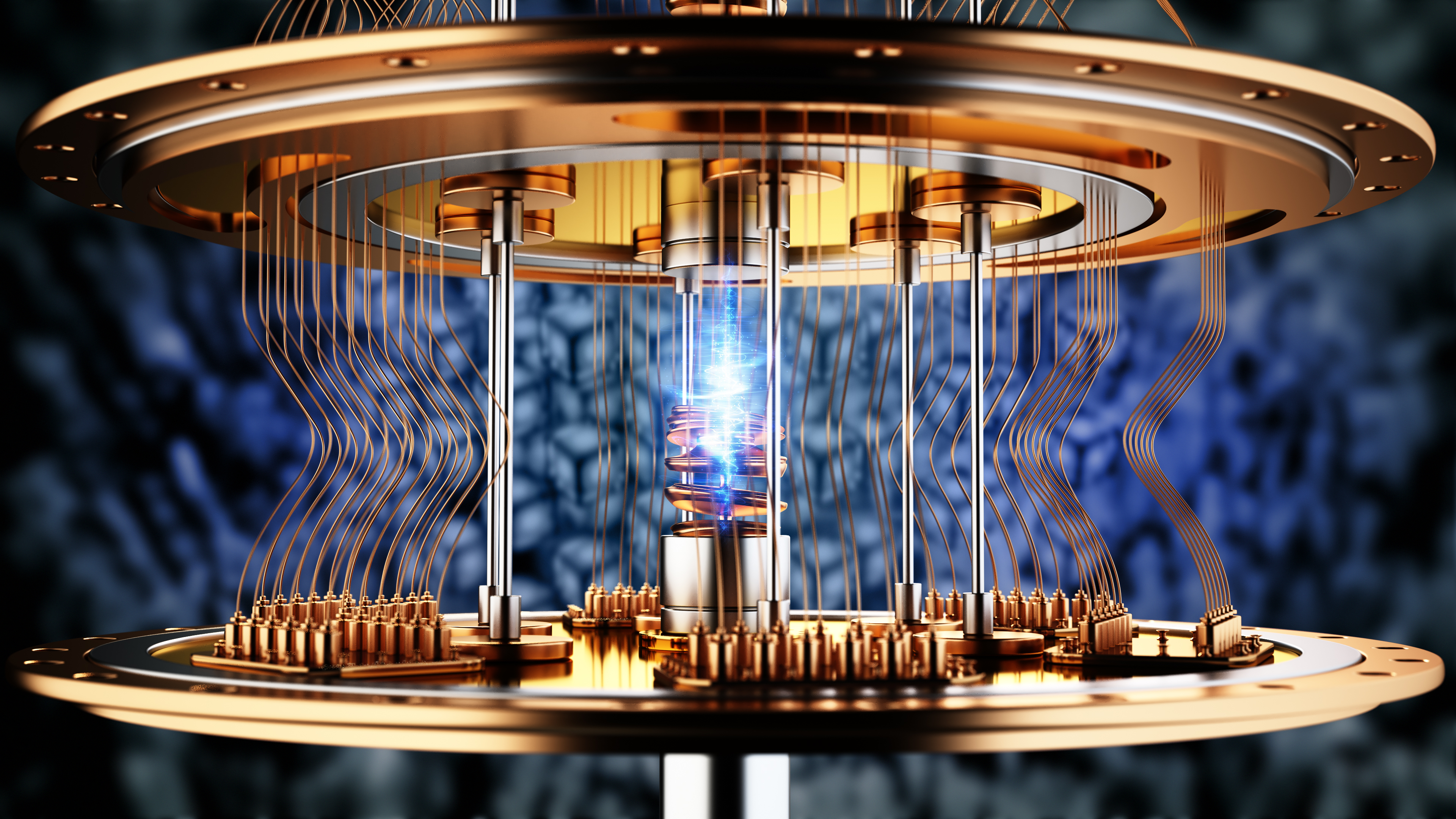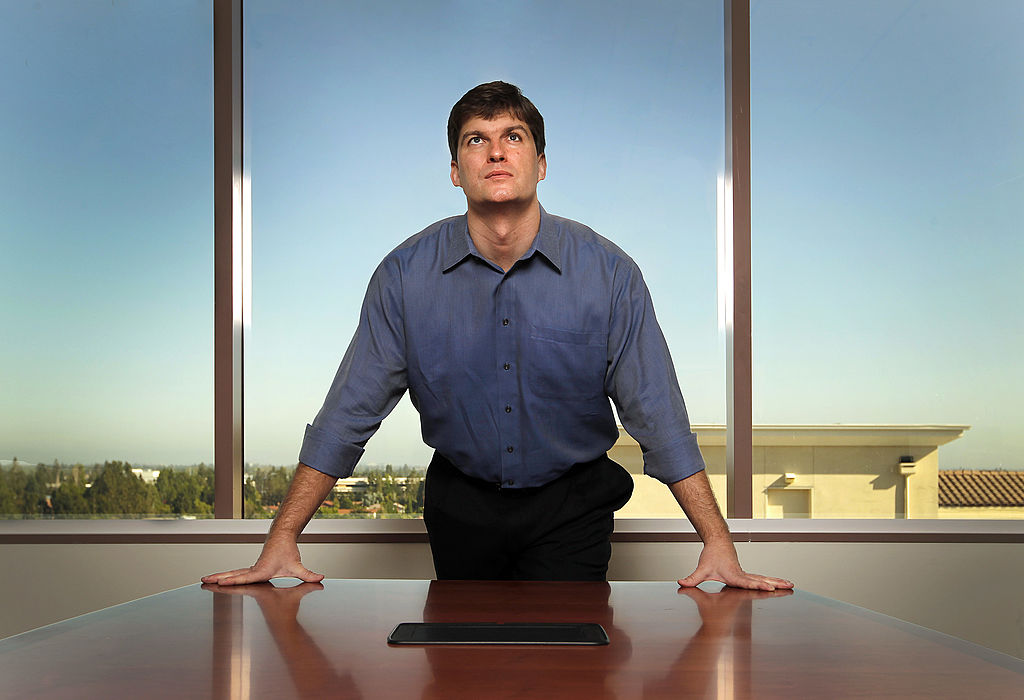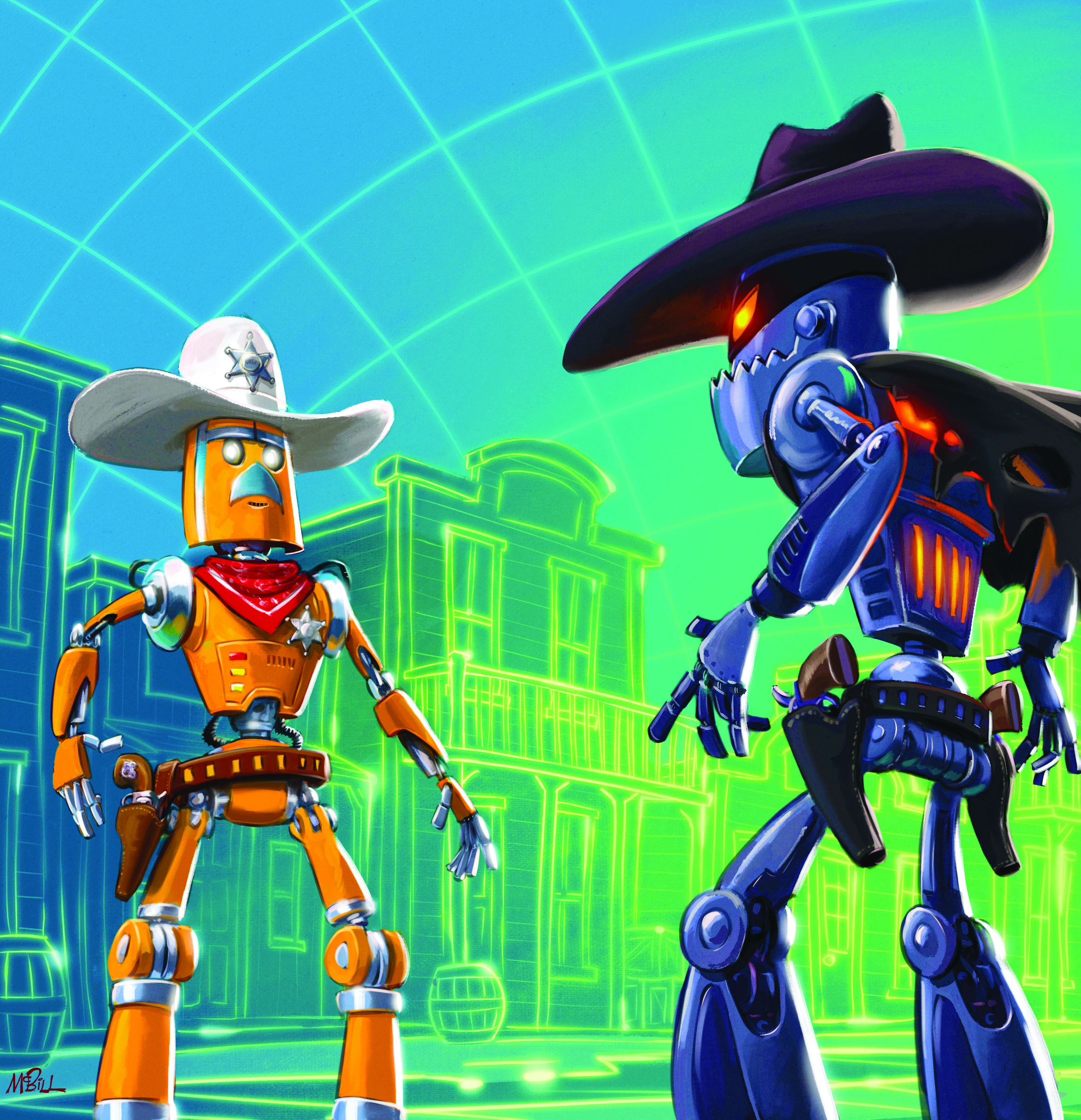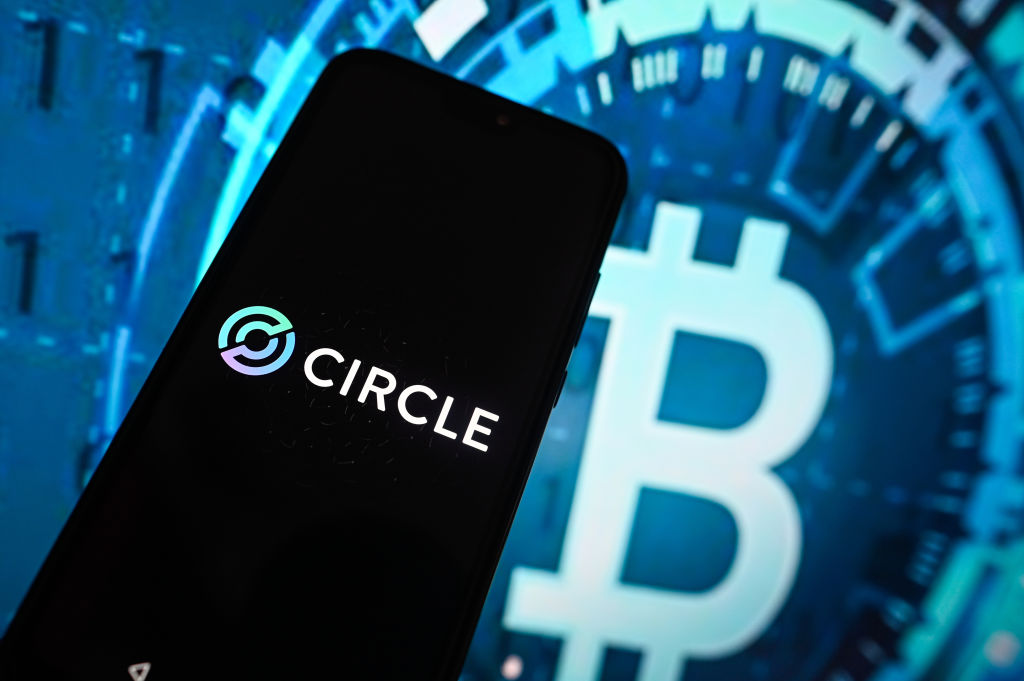The strange world of quantum computing
If we can harness the potential of quantum physics, modern computers may come to seem like plodding calculators in comparison with the machines of the future, says Chris Carter


You might think that creating a highly accurate model of the way air passes through a jet engine would be relatively easy. It is incredibly hard. The enormous number of variables means that it is, in fact, beyond the abilities of our most powerful computers. But maybe not for long. Aircraft engine manufacturer Rolls-Royce has partnered with specialist companies to produce quantum computers to crack the puzzle.
What is a “quantum” computer? You and I live in the “classical” world. The things we see and the ways in which we interact with them are defined by the laws of “classical physics” as laid out by Albert Einstein in his General Theory of Relativity. So far, so straightforward. Einstein’s theory works so well, it has been likened to a work of art. Lev Landau, a Russian physicist, called it “the most beautiful of theories”. There is just one snag. On the level of very small things – things we cannot see but we know are there, such as atoms – the General Theory of Relativity breaks down. That is to say, the laws of physics of the classical world stop working.
A new theory was needed to describe this strange new world of the very small. That is where quantum physics (also known as quantum mechanics) comes in – “quanta” being the little things that make up bigger things, such as the photons (subatomic particles) that make up light. Humans, with our ape brains, were not designed by evolution to understand this. The way things work down at that level just don’t make sense the way they do in the classical world of walking the dog and Sunday football. “To understand quantum theory, it is the grammar of our understanding of reality that we need to modify,” says the theoretical physicist Carlo Rovelli in his book Helgoland (2020). That may be beyond the scope of this article. But what does any of it have to do with computers?
MoneyWeek
Subscribe to MoneyWeek today and get your first six magazine issues absolutely FREE

Sign up to Money Morning
Don't miss the latest investment and personal finances news, market analysis, plus money-saving tips with our free twice-daily newsletter
Don't miss the latest investment and personal finances news, market analysis, plus money-saving tips with our free twice-daily newsletter
Finding your way through the quantum maze
Your laptop and the phone in your pocket are examples of what quantum physicists call “classical computers”. They operate according to the laws of the classical world. Classical computers operate using “bits”. A “bit” is short for “binary digit”, and it is the smallest unit of information a computer can process. An electrical switch that is “on” corresponds to the value “1” in binary code, the “alphabet” if you like, that computers use. “Off” corresponds to “0”. Eight bits make a byte, 1,024 bytes make a kilobyte (KB), 1,024 kilobytes make a megabyte (MB). A bit is either on or off – 1 or 0 – and it cannot be both. But in the quantum world of very small things, a bit – known as quantum bit or qubit – can be both 1 and 0 at the same time. How? Because of something called superposition. It’s like Schrödinger’s cat.

The intriguing case of the cat that is alive and dead at the same time may be the key to our technological future
In 1935, the Austrian-born physicist Erwin Schrödinger came up with a now-famous thought experiment. A cat is shut in a box and it cannot be seen by outside observers. Inside the box with the cat is a radioactive material. If the radioactive material decays while the cat is in the box – an event for the purposes of the experiment with a 50/50 chance of happening (probability is a central tenet of quantum mechanics) – it triggers a device that releases poison into the box, killing the poor cat.
But there is no way of knowing if that event has happened until someone opens the box to check. The cat’s fate is indeterminate until that point, so it is as if the cat is both alive and dead at the same time. Cat alive or cat dead? Both outcomes are possible until the box is opened and probability becomes certainty. This concept of the cat being both dead and alive at the same time forms the basis of the orthodox “Copenhagen Interpretation” of quantum mechanics. If that is a challenge to what you consider credible, consider that one of the main challengers to the Copenhagen Interpretation is the Many Worlds Interpretation (MWI), which posits an infinite number of “parallel universes”. Rovelli’s Helgoland is an excellent introduction to this fascinating subject.
But how can a cat – a creature of our classical world – exist in a quantum state? Well, it can’t, not really. Schrödinger chose the suffering feline for illustrative purposes only. Instead of a cat, imagine an atom. When an atom is in superposition, it is in a very fragile state. Any outside “noise” – anything that interferes with it – will shake the atom from its quantum state and cause what is known as decoherence. When decoherence occurs, the quantum effect of superposition is lost. A cat is far too complex to be held in such delicate isolation. Even just looking at the atom is enough to cause decoherence, as improbable as that sounds. Somehow, the atom “knows” it is being watched. When atoms inside a quantum computer decohere, errors creep into the calculations. Stopping that from happening is one of the biggest challenges to building quantum computers.
Back to qubits. Atoms are made up of neutrons and protons inside a nucleus, surrounded by electrons. A single qubit – our quantum bit – usually takes the form of an electron of an electrically charged atom, called an ion. Builders of quantum computers keep that ion in delicate isolation inside an “ion trap”. An ion trap holds the atom in place using electric fields, and it is either chilled to just above absolute freezing or placed inside a vacuum to prevent any noise from shaking the atom from its quantum state. Electrons “spin”. But for the purposes of understanding how quantum computers work, that “spin” is better thought of as an electron pointing either up or down, as physicist John Gribbin explains in his very handy primer on quantum computing, Computing with Quantum Cats. Here, the “up” can be used to denote “0” in the computer binary code. The “down” refers to “1”, and the individual electrons (qubits) can be manipulated using magnetic fields or microwaves. And there you have your quantum bit – your qubit.
What really sets a quantum computer apart from its classical cousin is its ability to perform multiple calculations simultaneously. Remember, a qubit can be both 1 and 0 at the same time, thanks to superposition. For example, if you set a classical computer the task of finding the route out of a maze, it will try each possible path in turn until it finds the route that leads to the exit. A quantum computer, on the other hand, will simply try every path at the same time. Problems that would take our most powerful computers millions of years to solve will take a quantum computer hours or even minutes.
But there is one important piece of the puzzle missing – how to string qubits together to make a calculation.
Einstein's 'spooky action' theory
Information can be passed from one qubit to another through a phenomenon called entanglement. Under the right conditions, if you introduce an electron in a quantum state (a qubit) to another qubit, whatever happens to the first happens to the second – they have become “entangled”. That’s true even if they are a million miles apart. Nobody knows how. Einstein called it “spooky action at a distance”. He was, in fact, “disgusted” by this phenomenon he couldn’t explain, says Gribbin. Yet, it is real. It is how information is shuttled around inside a quantum computer.
To have a truly effective quantum computer, however, you need more than two qubits. Ideally – and this is actually the target of many companies making quantum computers – you would have at least a million. At the moment, IBM has achieved 1,180 qubits on a chip, so we still have a way to go. But new discoveries are being made and milestones reached all the time. In February, Microsoft “introduced” its Majorana 1 chip, which it says will “realise quantum computers capable of solving meaningful, industrial-scale problems in years, not decades”. The technology uses a newly discovered type of particle, called majoranas, which until recently were hypothetical. The technology uses a new material – a type of superconductor – that exists in a new “state of matter” – one that is neither solid, liquid, nor gas. Majorana particles are supposedly more resistant to decoherence, meaning fewer errors. Similarly, at the end of last year, Google introduced its own quantum chip, called Willow.
Limiting errors is vital if we are one day to solve complex problems where there are a great number of variables – such as the “computational fluid dynamics” of Rolls-Royce’s jet engine, mentioned at the start. Quantum computers may also be used to speed up the development of new pharmaceutical drugs, create new materials and better predict weather patterns and climate change. One area, however, where quantum computers may one day cause a problem is in cryptography – the practice of making information secure, usually through encryption. It would take a classical computer potentially millions of years to crack an encrypted message or a sophisticated password. A quantum computer, testing every possibility at the same time, just like in our maze example, may take minutes.
It’s no wonder, then, that banks, hospitals, spy agencies and anybody who sends sensitive information are worried. It is even believed that hackers may already have stolen databases of encrypted information to crack later, when they have the quantum computers to do it. But even here, we may have a lifeline. Remember, merely looking at a particle in a quantum state changes its quantum properties. So if you send encrypted information down a fibre-optic cable via photons in superposition – known as Quantum Key Distribution (QKD) – the moment a hacker “looks” at the message, the message is rendered unreadable. The potential uses for quantum computers are seemingly endless.
The British start-up at the forefront of the quantum-computing revolution
Haywards Heath is a pleasant town, south of London. When you come out of the train station, walk past the big Waitrose and the Burrell Arms pub on the corner, by the roundabout. Carry on a little further and you come to a modest trading estate. Here, scientists are working on some of the most advanced computers in the world. I have come to visit Universal Quantum (UQ), a start-up spun out of the University of Sussex in 2017.
The quantum physicist John Gribbin also worked at the University of Sussex, and he mentions UQ in the foreword of the updated edition of Computing with Quantum Cats. For all its pioneering work, sharing the field with the tech titans of Silicon Valley, UQ feels very British. Rather than buzz me in, a smiling electrical engineer runs down the stairs to open the door. I am then ushered into the “Entanglement Zone” (the staff canteen) to wait for Sebastian Weidt, professor of quantum computing as well as CEO and co-founder of Universal Quantum, who is finishing a call with investors. On the floor is a dog bowl. Universal Quantum is a pet-friendly place, it is explained to me, although the descendants of Schrödinger’s cat will probably want to give it a wide berth.
Weidt, tall, youthful and wearing blue jeans, strides into the room. UQ is a proudly British company, Seb (as Weidt prefers to be called) tells me as we settle onto the sofas in the Entanglement Zone. I remark how good it is to see another great start-up spun out of our universities – I’m thinking of the likes of FTSE 250-listed Oxford Instruments. I cut to the chase and ask Seb when he is going to list the company on the stock market so we can all buy in. Alas, there are no plans, he says, but he rules nothing out. There aren’t any investment trusts among the shareholders either, so, unfortunately, we will just have to cheer on UQ from the sidelines for the time being.
Early on, after UQ had been founded, it had been suggested the company base itself in the US. Universal Quantum does, in fact, have an office in the US as well as a facility in Hamburg, Germany, but the founders rebuffed the idea, choosing Brighton for their first home. In 2021, UQ received a £7.5 million grant from Innovate UK’s Industrial Strategy Challenge Fund to build a scalable quantum computer for use in the aerospace industry as part of a consortium that includes Rolls-Royce. That was followed by a €67 million contract with the German government in November 2022 to build two machines for the German Aerospace Center (DLR).
UQ is Britain’s biggest exporter of quantum computers. But given the experimental nature of the science, Seb says he would really like to see the British government “step up”. UQ is “an engineering-focused company”, he says. The company works closely with its clients to develop machines according to specific needs, along with suppliers, such as those that make the silicon wafers for the chips, rather than UQ making them. That may not sound very exciting, says Seb, but it simplifies development and reduces costs. It is very much in keeping with UQ’s pragmatic approach – one that insists on being realistic about the considerable challenges of making quantum computers. “Investors know [quantum computing] will be huge,” he says. “[But] people [can be] naïve when new innovations come along.” In particular, he takes issue with the way flashy news releases from the likes of Microsoft and IBM are often interpreted by the media. “Don’t get distracted by beautiful numbers,” he says. It’s not the number of qubits you can fit onto a chip that is necessarily important, but the quality – how resistant they are to errors. The machines developed for Germany’s DLR had between 50 and 100 qubits.
The other factor to consider is “scalability”. The bigger a quantum computer gets, the more power it often needs, mainly to keep it cold. But UQ’s computers “don’t need a nuclear powerplant” to operate. UQ keeps its chips in a vacuum environment, which requires less power. That makes scaling easier, which UQ does by building its computers on a modular basis. For a “how to” guide to building a scalable quantum computer, you can read the blueprint paper Seb published with his colleagues shortly before UQ was founded: Blueprint for a microwave trapped ion quantum computer.
The efficient use of hospital beds in the NHS is among the more prosaic areas where quantum computers could improve our lives. But Seb also sees a use in defence. The first classical computers were developed during World War II, he points out. Quantum computers will be used in the future to process the information coming from battlefield positions, for instance. Whoever does that first will have the advantage, so “it’s important the UK develops a sovereign capability”, he warns.
Seb leads me on a tour of UQ’s research and production facilities. I can see on a TV screen a pair of engineers building a quantum computer in a room we cannot enter. On the wall, besides a model of a chip suspended in a vacuum chamber, is a scale diagram showing the relative size of zero qubits to one million plus. Seb asks me to write on a Post-It note the one problem I would most like quantum computers to solve. I write “A cure for cancer”, and Seb places it at the high-end of the scale, among, I noticed, several other Post-Its on a pharmaceutical theme. That suggests, if anecdotally, a common societal desire, even if we are still some way off achieving our goals. As I leave, I say how remarkable it is that we, today, have functioning quantum computers at all. The opportunities such machines present are “really exciting”, Seb agrees. “And it’s really important we do it here [in Britain].”
This article was first published in MoneyWeek's magazine. Enjoy exclusive early access to news, opinion and analysis from our team of financial experts with a MoneyWeek subscription.
Get the latest financial news, insights and expert analysis from our award-winning MoneyWeek team, to help you understand what really matters when it comes to your finances.

-
 An AI bust could hit private credit – could it cause a financial crisis?
An AI bust could hit private credit – could it cause a financial crisis?Opinion Private credit is playing a key role in funding data centres. It may be the first to take the hit if the AI boom ends, says Cris Sholto Heaton
-
 Why Trustpilot is a stock to watch for exposure to the e-commerce market
Why Trustpilot is a stock to watch for exposure to the e-commerce marketTrustpilot has built a defensible position in one of the most critical areas of the internet: the infrastructure of trust, says Jamie Ward
-
 Big Short investor Michael Burry closes hedge fund Scion Capital
Big Short investor Michael Burry closes hedge fund Scion CapitalProfile Michael Burry rightly bet against the US mortgage market before the 2008 crisis. Now he is worried about the AI boom
-
 The global defence boom has moved beyond Europe – here’s how to profit
The global defence boom has moved beyond Europe – here’s how to profitOpinion Tom Bailey, head of research for the Future of Defence Indo-Pac ex-China UCITS ETF, picks three defence stocks where he'd put his money
-
 New frontiers: the future of cybersecurity and how to invest
New frontiers: the future of cybersecurity and how to investMatthew Partridge reviews the key trends in the cybersecurity sector and how to profit
-
 Will the internet break – and can we protect it?
Will the internet break – and can we protect it?The internet is a delicate global physical and digital network that can easily be paralysed. Why is that, and what can be done to bolster its defences?
-
 Canada will be a winner in this new era of deglobalisation and populism
Canada will be a winner in this new era of deglobalisation and populismGreg Eckel, portfolio manager at Canadian General Investments, selects three Canadian stocks
-
 Circle sets a new gold standard for cryptocurrencies
Circle sets a new gold standard for cryptocurrenciesCryptocurrencies have existed in a kind of financial Wild West. No longer – they are entering the mainstream, and US-listed Circle is ideally placed to benefit

